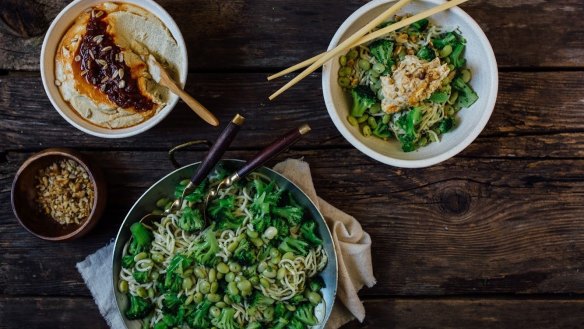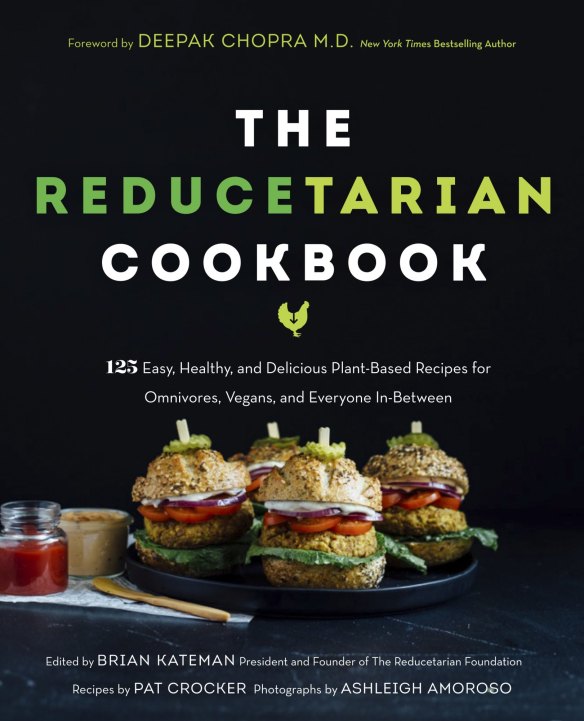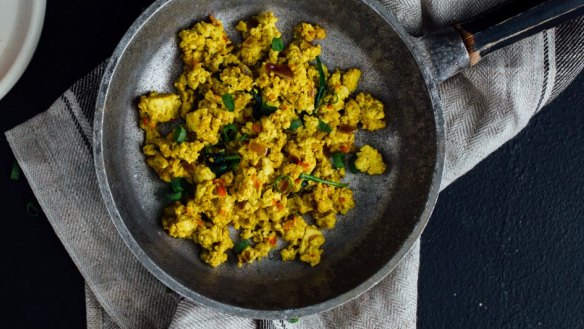Reducetarian: Making peace between meat-eaters and vegetarians

Food can do so much to bring us together – except when it drives us apart. In mid-2018, French farmers demanded police protection from vegans who stoned one butcher's shop and doused others with fake blood.

Tension between meat-eaters and vegetarians can run high, with both sides capable of trading insults and misinformation. Vegans are preachy! Carnivores are cruel! Meat rots in your stomach (it doesn't). You can't get enough protein from plants (yes, you can).
But it's time for both sides to meet in the middle for the planet's sake, says Brian Kateman, a lecturer with The Earth Institute Centre for Environmental Sustainability at New York's Columbia University. In 2014, Kateman launched the Reducetarian movement in an effort to end what often seems like a battle among vegans, vegetarians and omnivores and instead unite everyone who's made a made a conscious decision to eat less meat. You can be a reducetarian if you're a strict vegan – or if you're just putting your toe in the water with black bean burritos once a week.
It's more than just a nice inclusive idea – it's also realistic.

"Convincing us all to eat less meat has a better chance of success than persuading us all to do without animal products altogether – and could do more to cut carbon emissions than if just a few of us turn vegan," says Kateman, the editor of The Reducetarian Cookbook, a collection of easy recipes for anyone keen to try a more plant-based diet.
After all, if the world's meat-eaters just followed global dietary guidelines to eat more plant food and smaller amounts of meat (up to 455g cooked meat in a week is Australia's modest recommendation), we'd slash greenhouse emissions by a third, according to a 2016 study from Oxford University.
"The reducetarian approach challenges the idea that the only way to reap the benefits of reducing meat is to eliminate it from our diet entirely – and it also recognises that people are at different stages of willingness to eat less meat," says Kateman, who gradually shrank his own intake of animal products over a period of six years and now eats a diet he describes as 99.9 per cent vegan.
"We need to celebrate small changes as well as big ones. If you want to eat fewer animal products, making the changes at your own pace makes it easier to stick with them in the long-term."
Although some vegans take a dim view of this approach, Kateman thinks it's the gentle persuasion many of us need to eat more sustainably.
"A minority of vegans and animal rights activists object to incremental measures like reducetarian because they feel it's watering down their own messages. But I don't think we should let perfection get in the way of progress – I also hear from people who are intimidated by veganism but who are prepared to cut back on animal products after hearing about the reducetarian concept.
"If we want to reach the goal of eating fewer animal foods for the sake of the planet, for animal welfare and our own health, we'll get there faster if we work together – or at least not undermine one another."
But are there signs that old hostilities between plant and meat-eaters are already easing now that attitudes towards meals with less or no meat are shifting. Vegan meals are no longer the whacko food choice they used to be given that Australia's packaged vegan food market is tipped to reach $215 million by 2020 (and when you spot a vegetarian quinoa salad in a country pub like Mudgee's Oriental Hotel, you know the times are changing).
Yes and no, says Dr Heather Bray, senior research associate with the University of Adelaide. On one hand, we're thinking more about where food comes from but, thanks to the internet, it's also easier for opinions to become deeply divided.
"The internet allows us to find people whose thinking aligns with ours – either for or against eating meat, for example – and that can make our ideas become more entrenched," says Bray who, like Kateman, thinks it's time for both sides to listen to each other.
So where do you start if you're a vegan who doesn't get why someone can profess to love animals yet still eat lamb shanks – or you're an omnivore convinced that you can't be healthy on a diet that skips meat?
"It can be a threat to our identity when our world-view is challenged but rather than just killing the other point of view, it would be good to try and listen for a bit and try to find common ground," says Bray, whose research looks at community attitudes to science and technology in food production.
"Hurling insults doesn't get us anywhere. If we're going to figure out how to feed the world without wrecking the planet and in a way that respects both animals and people, we need to improve the conversation around eating or not eating meat.
"One way to do that is focus on the values we share and not the irreconcilable differences – like what affordable sources of protein, animal or plant, can we agree on, whether it's more sustainable plant sources or ensuring a good death for animals," says Bray, an omnivore with a background in agricultural science. Some of her funding comes from the meat industry. But she's also in favour of better animal welfare and developing a more sustainable food supply.
"If people are reducing meat in their diet or going vegan that's fine because the scientist in me knows we can't just keep taking more and more forest for food production to feed our growing population and not conserve the planet's resources. We have to be willing to change our behaviour even if it's just a little," she says. "But I also think that if you're going to eat meat then do it with eyes wide open – and not believing in some magic meat fairy who puts the animals to sleep."

Broccoli pesto noodle bowl recipe
INGREDIENTS
225g soba or udon noodles
½ tsp sea salt, plus more to taste
4 cups broccoli florets
1 cup frozen lima beans, green beans, or wax beans
½ cup basil pesto
Garnish (optional)
½ cup store-bought roasted red pepper hummus
½ cup chopped walnuts
METHOD
1. Bring a large pot of water to a boil over high heat. Add noodles and salt. Bring back to a boil and cook for 6 to 8 minutes, until al dente. Lift noodles from water using tongs, leaving the water in the pot, and transfer to a colander. Rinse and set aside to drain.
2. Add broccoli to the hot noodle water and bring to a boil over high heat. Reduce heat to medium-low and simmer for 4 minutes. Add lima beans, increase heat to high, and bring back to a boil. Cook for 2 minutes, or until broccoli is fork-tender and beans are heated through. Drain.
3. To serve, toss noodles and pesto in a large bowl, taste, and add sea salt if desired. Divide evenly among four serving bowls. Spoon broccoli and lima beans over noodles in each bowl. Spoon 2 tablespoons hummus (if using) into the centre of the bowls and sprinkle the chopped walnuts (if using) over the top.
Serves 4

Tofu scramble
For a hearty breakfast, roast potatoes and serve with the scramble, which can be easily doubled.
INGREDIENTS
225g organic firm tofu
2 tbsp nutritional yeast
1 tbsp curry powder
1 tbsp pure maple syrup
1 tbsp soy sauce or tamari
2 tbsp extra-virgin avocado oil
1 small onion, finely chopped
½ red capsicum, thinly sliced
1 clove garlic, minced (optional)
1 cup baby spinach leaves
sea salt (optional)
Garnish (optional)
tomato salsa
METHOD
1. Squeeze tofu over the sink using your hands. Roughly chop and set aside in a colander to drain.
2. Combine yeast, spice blend, maple syrup, and soy sauce with 2 tablespoons hot water in a medium-sized bowl. Add chopped tofu and break up with a potato masher or fork, mixing evenly with the yeast mixture. Set aside.
3. Melt oil in a frypan over medium heat. Add onion, capsicum and garlic (if using) and cook, stirring frequently, for 6 minutes, or until onion is soft and fragrant. Stir in tofu and cook, stirring occasionally, for about 8 minutes, or until tofu is warmed through. Add spinach and cook, stirring constantly, for 1 minute, or until wilted.
4. Taste and add salt if required. Serve with tomato salsa if desired.
Serves 3 to 4
Adapted from The Reducetarian Cookbook: 125 Easy, Healthy, and Delicious Plant-Based Recipes for Omnivores, Vegans, and Everyone In-Between by the Reducetarian Foundation. Published by Hachette, RRP $29.99.. Recipes developed by Pat Crocker. Photo by Ashleigh Amoroso.